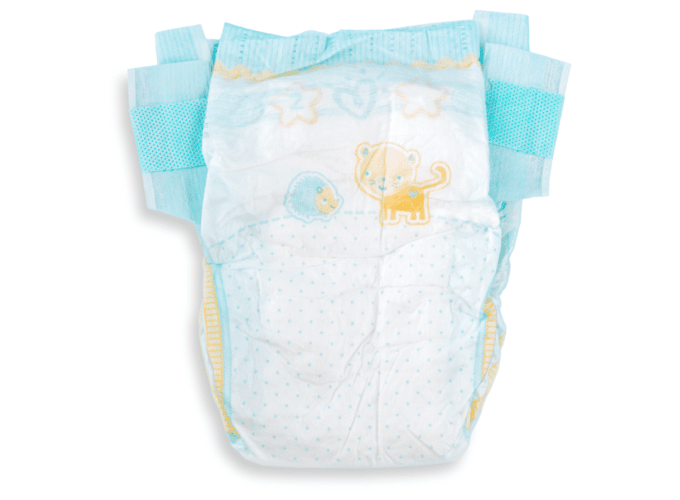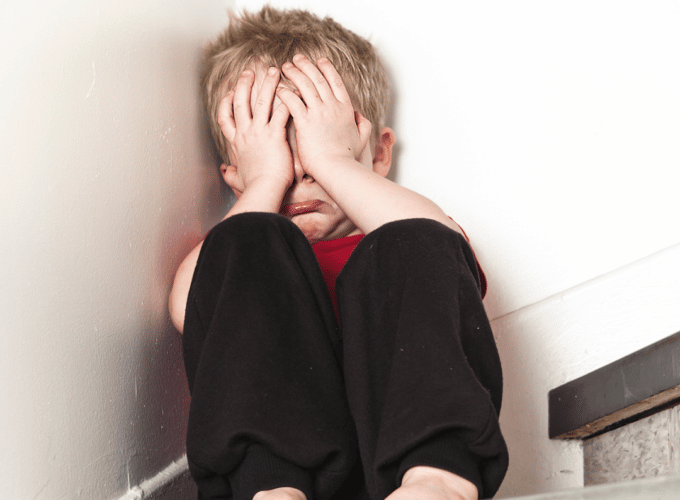Children who will only poo in a nappy and other toilet avoiders
Children who will only poo in a nappy are completely normal. Lots of children go through a phase, usually soon after potty training has begun, when they refuse to poo in the potty or toilet and insist on using a nappy.
Other children go through a phase of refusing to wee in the potty or toilet. You’ll find the information and techniques below will be relevant to them too.
Some boys and girls will work it out for themselves, but without intervention some would happily poo in a nappy for years.
Here are some tips to help you break the pooing in a nappy habit.
If your child insists on using a nappy to poo, DON’T SAY NO, or they will simply try to avoid pooing. Withholding the stools will lead to constipation – which is definitely something to avoid! Let them have the nappy on just to do their poo, and work on gradually changing their behaviour.
So, where do you start?
1. Constipation
Constipation often plays a part in potty/toilet avoidance. A big, hard, painful poo will scare the child, and to stop it happening again they simply hold on. Look at Advice for Children with Constipation for information on how to recognise if your child is constipated. There is lots more information on the Flowchart for Constipation. Make sure any constipation is really well managed before attempting to change toileting behaviour.
2. Making the toilet less scary
Some children are frightened of the toilet itself. This fear will need to be overcome before they can start learning to sit on it.
If your child is scared of the flush, start by flushing it while they stand by the bathroom door, then gradually ask them to come a little closer. When they are near enough, encourage them to put just a little bit of toilet paper in the toilet to flush away.
If they are worried about the water splashing back when they use the toilet, show them how to put a layer of toilet paper over the water in the toilet bowl.
Create a game with a few bottles of food colouring! Add a few drops to the cistern, then ask your child to guess what colour the water in the toilet will change to when they flush.
3. Learning to sit on the toilet
To start with, sitting on the potty/toilet should have nothing to do with pooing. The emphasis should be completely on relaxed, happy sitting – when you ask them to do so. To start with this may be a five second sit, once a day, fully clothed. That’s fine! Reward them for sitting (have a look at our Toileting Reward Chart), and resist the temptation to mention wee or poo!
The key now is moving forward gradually, so each little step forward is an achievable goal. You plan when the toilet/potty sitting should take place – aim for 20-30 minutes after each meal as that is the best time to poo, and before bed. Make sure your child’s bottom and feet are firmly supported – see the section 'How to get the poo in the loo' on Advice for Children with Constipation.
Over time you’ll build up a regular toileting programme, with your child sitting on the potty/toilet for 5-10 minutes four times a day. Keep a bag of special toys in the bathroom ready so they look forward to exploring what’s there whenever they sit on the loo.
Remember to reward every potty/toilet sit with your agreed system.
4. Next steps
Once you’ve made sure your child is not constipated, and they can happily sit on the potty/toilet for 5-10 minutes, you’re ready to begin working towards them pooing in the right place.
The key thing is to work out where they like to poo in their nappy, for example behind the sofa or in the corner of their bedroom, and where you want them to poo – on the potty/toilet. Put as many tiny steps as possible in between until eventually they reach the potty. Each step should be an achievable goal.
Be patient – this may take a long time, but it will be worth it! Read the examples below for ideas of how other parents encouraged their children to move step-by-step towards the potty.
Case studies from the ERIC Nurse
Peter
Peter was 9 years old when he was referred to the continence service with a request for one nappy a day. A highly intelligent boy, Peter was the middle brother of three.
Poorly treated constipation as a toddler had led to toilet avoidance, despite appointments with the paediatrician, gastroenterologist, psychologist and school nurse. Nothing any of them had said had ever affected his toileting behaviour. Peter said that they always focussed on the toilet – but that had nothing to do with him as he always stood to wee and wore a nappy in his bedroom to poo.
Step 1: Peter and his Mum were advised how to adjust his laxatives to make sure he was not constipated.
Step 2: Peter was asked to sit on the toilet, lid shut and fully clothed, for 5 minutes twice a day and read a book. Over the next couple of weeks he was asked to lift the lid before sitting, then remove his trousers, and eventually pull his pants down. He cooperated fully – he wanted his life to change, but he remained scared. He was happy to work on sitting on the toilet as long as poo was not mentioned. This gradual process of de-sensitisation worked. Peter lost his fear of sitting on the toilet, but he was still not able to just sit and poo.
Step 3: Peter was asked to sit on the toilet with his nappy on to do his poo.
Step 4: After a week Peter was asked to undo the nappy. This was too big a step, but he managed to undo one tab. Over the next few weeks Peter managed to undo all four tabs every time he sat on the toilet wearing his nappy.
Step 5: Over the next several weeks Peter gradually loosened the nappy until it was opened out flat on the toilet seat.
Step 6: From now on the nappy could be placed on the toilet rather than on Peter. Once Peter was used to this major change, the nappy could be gradually moved away from his bottom and down the toilet.
Step 7: Peter's mother remained completely committed to the process - cutting a piece of nappy just the right size to position in the toilet, and fishing it out afterwards to throw away. Over time, she cut the piece of nappy smaller and smaller, so it rested further and further down into the bowl of the toilet.
Step 8: Once a small piece of nappy was enough, it could be exchanged for a pad of toilet paper. Peter could then flush the toilet; his Mum didn’t have to retrieve bits of wet, pooey nappy from the toilet any more.
It was almost two years since the original referral, but the family were overjoyed. Peter has never looked back.
Joshua
Joshua, who had a mild learning disability, was 8 years old. He’d had poo problems ever since he experienced constipation as a toddler which had long since been resolved.
He wore nappies until he was 7 because he refused to poo without one, but his parents had observed that his nappies were invariably dry when they took him to the toilet, where he would wee but never poo. They had therefore put him in pants, and he did very well at keeping them dry, but he continued to insist on wearing a nappy when he needed a poo.
His Mum and Dad always knew when he was ready to poo as he went to the same spot in his bedroom.
Step 1: Joshua’s parents marked a cross on the spot in his bedroom where he always went to poo. They used green (his favourite colour) insulating tape as it peeled off the floor easily.
Step 2: After a few days Joshua’s parents marked a new cross on the floor with him, just a couple of centimetres from the first. When he next asked for his nappy, they took him to the cross. When he had finished, he chose a sticker, which was always his favourite reward.
Steps 3 to 33... approximately!: A few days later Joshua’s parents once again moved the cross. They discovered that if they attempted to move it too far he became upset and tried to put it back, but small steps were accepted. Over several weeks they moved the cross in tiny steps across Joshua’s bedroom floor, across the landing and into the bathroom.
Step 34: A momentous step! The cross was stuck on the toilet seat. Joshua’s parents expected to begin the slow process of gradually removing the nappy, similar to Peter’s story above. Joshua had other ideas though: he simply sat on the green cross on the toilet seat and did a poo. Joshua’s parents took a long time to recover from the shock!
George
This story is incomplete, as George was the son of a colleague who changed jobs, at which point he was still on his poo journey. So much progress had been made though, with such patience and determination, that it is highly likely that success was achieved!
George was 6 years old and had been diagnosed with Autistic Spectrum Disorder. His parents had no idea how or why his poo habit had started, but when George needed to do a poo he went to stand behind a large tree at the end of the garden. He pooed in whatever was on his bottom at the time – pants/nappy/pull-up – but always by the tree.
George’s parents realised that the first thing they needed to do was to get him into the house – but that was not going to be easy as they couldn’t bring his tree!
Step 1: George’s parents introduced some toys to act as objects of reference on and beside the tree. They referred to the toys, not the tree, at all times.
Step 2: The family wheelbarrow was placed beside the tree.
Step 3: The toys were gradually moved from the tree to the wheelbarrow; the wheelbarrow became the object of reference.
Step 4: The wheelbarrow, with toys, was gradually moved up the garden until it was outside the back door.
Step 5: The toys began to be moved into the doorway...
...and there the factual account ends.
George, however, can provide us with an example to work on; how could his journey be continued? It is clear that we need to plan a series of tiny steps, each an achievable goal that does not unsettle George.
Step 6: could be to gradually move the toys into a box inside the back door. The toys remain the objects of reference; the box has been added.
Step 7: the box of toys makes a slow journey from the back door into the family bathroom.
Step 8: the toys reach the toilet, and remain round it.
Step 9: now George will have to be introduced to the toilet, and over time learn to sit on it. Perhaps Peter's story can suggest some steps towards this.
Step 10: until George reaches the stage of sitting on the toilet, he will continue to poo in his pants/nappy/pull-up. Emptying the poo into the toilet and learning to flush the toilet could be additional steps towards his ultimate goal.
A poo journey like this is going to take a huge amount of time and effort and parents will need a lot of support. Encouragement to think about the future, without intervention, may be a useful incentive. At 6 years old changing George's pants or nappy when he poos is an easy option. That won't be the case when he is 16.
Listen to one of our experts explain how to help your child if they refuse to use the potty or toilet.
Information on how to spot the signs of constipation in children and getting it treated.
Upcoming events
Share this page



